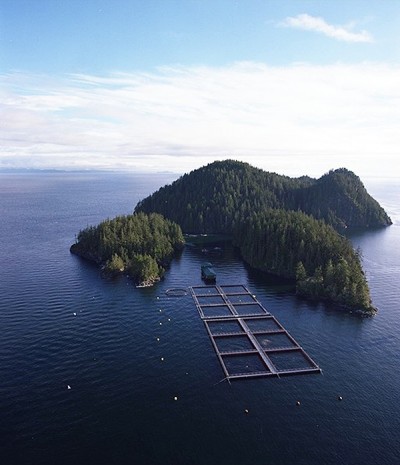A report by the state food authority reveals that lice levels have increased “dramatically” over the last year, especially among salmon, trout and young trout in key fishing areas around Norway.

The situation is particularly problematic along the west Norwegian coast, where a number of large fish farms are found. In parts of Hardangerfjord, salmon and trout were found to have on average 50 lice, when only just over 10 are needed to greatly increase the risk of death.
Salmon lice, which cannot survive in fresh water, are common among fish farmed salmon and cost the industry an estimated NOK 500 million (nearly USD 90 million) each year. The lice are believed to spread easily in order to threaten wild populations. Use of chemicals to fight the problem is controversial because they can lead to a build up of hereditary resistance among the salmon population. The salmon lice issue flared up previously in 2009, and has even concerned King Harald, himself an avid angler who is keen to protect wild salmon.
‘Surprising’
A regional director at the state food authority, Roald Vaage, told Norwegian Broadcasting (NRK) that the high results for lice found in wild salmon were “a little surprising” given that the problem of lice in fish farms themselves had actually improved. Kristina Landsverk, a director of the authority, commented to local west Norwegian newspaper Haugesunds Avis that “the reason for the amount of lice found on wild fish is probably an overly long delousing period, poor coordination of the use of the feedstuff emamectin, and a high concentration of fish farm fish, especially in Hardanger fjord and Trondheim fjord.” The report also suggested that delousing of fish farms had not been properly achieved in a number of particularly vulnerable areas for wild salmon.
Landsverk will meet with industry representatives in the coming weeks to discuss the lack of progress. A detailed report into the problem will be delivered to the food authority by the end of the year as part of a collaboration between the Institute of Marine Research, the Norwegian Institute for Nature Research, Advisory Biologists and UNI Environment.
‘Close the farms’
Meanwhile, Bjarne Oppegård, general secretary of the Norwegian Association of Hunters and Anglers, described the situation as “out of control” to NRK. His organization is campaigning to reduce the number of fish farm salmon in the sea and to tighten up the farms, as farm operators were, in Oppegård’s view, not “managing the job alone” of reducing the lice. Speaking to Haugesunds Avis, the general secretary added that “this is happening at the worst imaginable time for the wild salmon” because “the most important emigration period” was underway. He also criticized the state food authority’s current measures, stating that “it is high time that they sharpen their claws and back up their words with action.”
Fisheries minister Lisbeth Berg-Hansen responded to the report with promises to implement further measures to address the lice issue. Speaking to Haugesunds Avis, the Labour Party minister described the situation as “worrying,” and confirmed that a number of improved measures would come from the state food authority in July for consultation. She said the authority would “get all the tools in this area, and I have asked them to use these.” She also stressed that the industry itself must live up to its obligations.
Nonetheless, Berg-Hansen, whose family runs a fish-farming operation in Norway, stopped short of recommending a reduction in the population of fish in fish farms, stressing to NRK that lice levels in the farms were “either at the same level or lower than last year.” She has been under criticism before over alleged conflict of interests in the lice issue, because of her family’s involvement in fish-farming, but she now wants to see “more research” into how the lice spread from fish farms to wild populations before taking any further steps to cut back fish farm numbers.
Scientists attack minister
A number of scientists reacted critically to the minister’s suggestion for more research. Peter Andreas Heuch, who specializes in parasites at the Norwegian Veterinary Institute, said to newspaper Dagens Næringsliv, “that there should be other and until now unknown sources for the lice [other than fish farms] is something I cannot understand.”
Professor Are Nylund of the University of Bergen’s Institute for Biology went further, describing Berg-Hansen’s statement as “quite provocative” to Dagens Næringsliv. The professor stated that “there are between 500,000 and 600,000 wild salmon and many salmon trout along the coast” but that this “is not comparable with what is found in the fish farms.” Although the amount of lice in farms has decreased, Nylund says that “it is simple mathematics” that the situation is now “completely different” from the past because there are “300 to 400 million fish” found in farms today. “What matters is the total lice on the wild fish, not on the fish farms,” he concluded.
Nylund agrees with the Association of Hunters and Anglers that production should be reduced dramatically at large fish farms to ensure that wild salmon can survive.
Views and News from Norway/Aled-Dilwyn Fisher
Join our Readers’ Forum or comment below.
To support our news service, please click the “Donate” button now.

